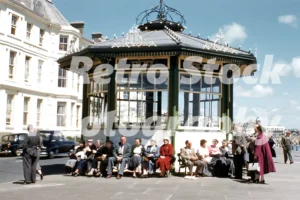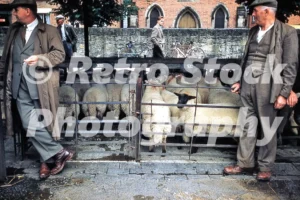Set just off Belvedere Road on London’s South Bank, the Torsion Fountain – also known as the Shell Fountain – is a striking example of post-war public art. Tucked within the courtyard of the Shell Centre’s Upstream Building, this twisting bronze sculpture is a hidden masterpiece that combines sculpture, water engineering, and architectural harmony. Despite being somewhat overlooked today, it remains one of London’s most significant pieces of mid-century design.
A Sculpture with Movement
Created between 1959 and 1963 by Czech-born sculptor Franta Belsky, the fountain is both a kinetic sculpture and a functioning water feature. At its peak, it could circulate up to 2,000 gallons of water per minute, channelled through its swirling bronze form. Cast in 104 individual bronze sections and weighing around 15 tonnes, the piece forms an elegant spiral – evoking natural forms like shells or whirlpools – that gives the work its name: Torsion.
Belsky described the work as “showing the marks of fingernails and the grip of the human hand… like a shell eroded by sand and sea.” He was inspired by the movement of Bach’s Toccata and Fugue in D Minor, giving the piece a musical, almost rhythmic energy. It was deliberately designed to contrast with the clean, modernist lines of the Shell Centre itself, offering a human and organic counterpoint to the surrounding architecture.
A Product of Its Time
The Shell Centre complex, where the fountain sits, was constructed between 1957 and 1962 as Shell Oil’s British headquarters. The building’s design, led by Sir Howard Robertson, was part of the broader redevelopment of the South Bank following the Festival of Britain in 1951. This event had transformed the area into a symbol of national regeneration, and Shell’s new home was intended as a showcase of forward-looking corporate modernism.
The Torsion Fountain played a key role in this vision. Rather than being tucked away, it was placed at the heart of the building’s main courtyard. It was meant to be seen from the offices above and enjoyed by visitors at ground level. Its sculptural form echoed the festival’s emphasis on combining utility with beauty—an ethos that defined much of Britain’s post-war architecture and design.
Grade II Listed and Still Standing
In 1999, the fountain was granted Grade II listed status by Historic England, recognising it as a structure of special architectural and historic interest. This listing helped secure its place within the landscape, even as redevelopment plans have reshaped much of the South Bank.
Over the years, the fountain has not always run at full power, and there have been periods of inactivity. However, it remains in place, and recent efforts to restore parts of the Shell Centre complex have sparked hopes that the fountain’s full functionality may one day return.






Reviews
There are no reviews yet.